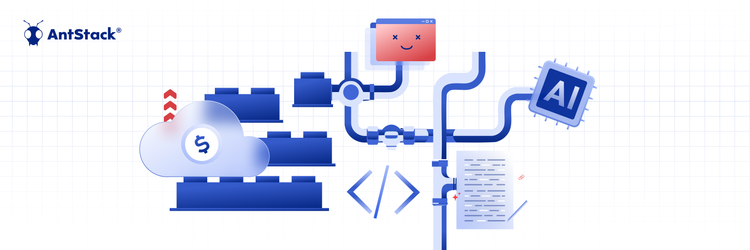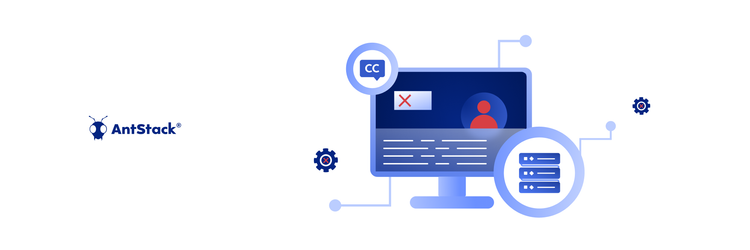Rethinking Cloud Spend: Modernization Over Short-Term Cuts
In our two-part series of CEO-CTO unplugged (Ep 1 & Ep 2) , co-founders Jeevan (CEO) and Prashanth (CTO) sit down for an honest conversation. They talk through the early stumbles, the small wins that mattered, and the bigger lessons that took time to land. It’s open, personal, and rooted in the belief that serverless isn’t just a choice, it’s where the future is headed.
If you’ve ever wondered what modernization really looks like behind the scenes, this is that conversation - reflecting on what it’s actually taken to modernize from scratch in a cloud-first world.
TL;DR
Modernization isn't about chasing the latest tools. It's about assembling the right ecosystem to solve real problems quickly, with serverless often serving as the fastest path to impact.
Architecture should solve the problem, not complicate it. Choose architecture based on context, not trends. Microservices may fit 95% of use cases, but for the other 5%, a monolith might save you time, money, and sanity.
Modernization isn't always a choice; sometimes, it's the only way forward. When your tech becomes the bottleneck to business growth, transformation stops being optional.
The path to modernization isn't the same for everyone. And that's the point; the goal isn't to copy patterns. It's to find what makes your org faster, more adaptable, and future-ready.
When Serverless Just Made Sense
For Jeevan and Prashanth, serverless felt like the obvious next step in the evolution from LAMP stacks to EC2, not just because of its technology but also because of the simplicity it introduced.
From Monoliths to Maintainability
Serverless architecture inherently discourages monolithic design. Jeevan connects this to his early obsession with the Separation of Concerns, and Prashanth ties it to Domain-Driven Design, noting how serverless encourages clean, domain-specific ownership, with minimal coupling and maximum clarity.
Choosing the Right Architecture for the Right Problem
Despite their passion for serverless, Jeevan and Prashanth acknowledge that monoliths aren’t obsolete. In cases where complexity is low and scalability isn’t critical, monoliths still hold value.
Sometimes, Modernization is Unavoidable
The journey from Spree Commerce to a custom e-commerce platform was triggered not by aspiration, but necessity. After their legacy monolith choked under user load, they embraced a painful 18-month transition, a modernization effort that ultimately laid the foundation for their serverless-first future.
Infrastructure Thinking: Then and Now
Jeevan reminisces about tools like Chef and the philosophy of repeatability in provisioning, ideas that still hold value today in serverless. Prashanth builds on this by describing Lambda’s evolving role as an orchestration layer, not just for apps, but for infrastructure.
The Growing Buzz of Serverless
What once felt like a niche interest has matured. Conference rooms that were once silent now see enthusiastic engagement from architects, platform heads, and enterprise leaders. Jeevan highlights events like re:Invent as proof of this growth.
Why Serverless Still Feels Out of Reach
Despite the buzz, serverless adoption lags. The roadblock is cloud vendor lock-in, but the real barrier is upskilling. Many companies are still on their first leg of cloud adoption, facing steep learning curves and legacy baggage. Unlike Kubernetes, which allowed “lift and shift,” serverless demands a fundamental rethinking that many aren’t yet prepared for.
The Inconvenient Truth: Serverless Had No Sales Engine
Jeevan points out that serverless grew because developers and internal champions believed in it. Prashanth agrees that this lack of sales alignment still makes it tough for teams trying to get buy-in today.
How Many of Us Have Actually Moved Off Our Gmail Accounts?
“Vendor lock-in” is a common fear, but serverless demands a shift: it’s about forming a partnership with your cloud provider, not fearing divorce from a vendor.
Overengineering: The Real Drag on Innovation
From Kubernetes to bespoke infra setups, the team calls out the tendency to overbuild. For many use cases, especially internal tools, serverless is not just sufficient, it’s ideal. Why scale for 10x traffic that may never come, when serverless gives you scale only when you need it?
Serverless: The Compliance Trojan Horse
It turns out that serverless isn’t just easier to build with, it’s easier to audit. The architecture naturally enforces boundaries, logs everything, and reduces the surface area for risk. Prashanth highlights how solutions like NeonDB and Firecracker make tenant isolation and compliance almost feel automatic.
All You Need is Developers and a Credit Card
The closing theme is empowerment. With serverless, there’s no waiting on DevOps or approvals, just code and ship. Jeevan likens it to the early internet days: full of possibility, low on friction. For modern developers, serverless isn’t just architecture, it’s agency.









